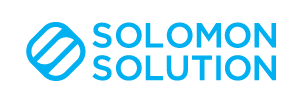
In 2015 I fell into marketing. Or really, I was combining my new journalism degree and with high-level data, which felt like falling. My future employer described me as hireable, but ‘green’ which is a phrase that I actually enjoyed. It was a nice way of saying ‘you don’t know like anything really.’ But it’s a temporary state – I was like a tiny succulent.
Three years later and I know a bit more (though still learning a lot everyday). Most of that learning came from doing it wrong the first time—sometimes a second or third time. Here are the top 3 things I’ve learned as I’ve migrated from green to whatever comes after green:
1. Building a Gantt Chart incorrectly. On the eve of my first major project, I spent so much time building a custom Gantt Chart. I showed it off to my senior PM and members of my projects like I had invented the actual concept. Unfortunately, while it was a helpful view, it was not a workable workflow for the team. Mixing in Sprint Cycles, VSTS, and a client-facing schedule in with my Gantt Chart meant many manual updates and at times an unhappy and confused team. Lesson learned, be smart about what it is your marketing projects require, what cadence development, feedback, and delivery will require, then start simply.
2. Inter department woes. Running a project that stretches a design department, analytics team, development, and execution is difficult enough logistically. Add in clashing personality types, and it can become a disaster or even affect the outcome of your project. Most of these clashes may simply require all members to remain professional, but one thing I did that made this difficult was treating people as resources instead of team members. No one who has worked hard for their career likes to be told how to do something from someone in a different position or department—however, especially on a project with a demanding stakeholder, it can become easy to fall into a ‘ticket’ system where orders are essentially placed to a team member instead of problems to solve collectively.
3. Asking the wrong questions or no questions at all.This one still gets me, and I am constantly working to improve. At the beginning of my career, I was so overwhelmed that I couldn’t think of the right questions to ask at the right time. I would go back to my desk and either a) make assumptions of those questions, that were only sometimes right or b) fret over how to go back to the stakeholder and ask this question after I said I understood the words that came out of her mouth. After some time, I got better at visualizing the project as the details came in.. As soon as the virtual project would get ambiguous, I would mark a question. This helped me make sure the details were filled in as soon as possible. I would have a list of standard questions and never ever leave the room without asking “Is there anything else we should know that we haven’t asked about?” And by envisioning a happy stakeholder and a complete project, I ask myself, ‘What will she ask about at the second to last meeting before launch?’ or ‘What will she be proud of having accomplished?’ Working backwards helped create a more meaningful outcome for the project.
Overall project management for marketing in my experience has been like drinking from a firehose at times—learning marketing and high-level organization skills at the same time is not easy. By following the lessons I learned your workflow will get easier, tools become more helpful, and knowledge comes together more efficiently.

